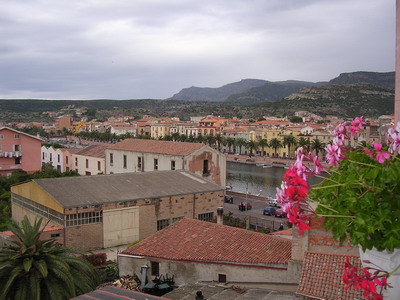

A Week in Sardinia (7/7)
These pictures were taken while touring the north half of the island of Sardinia in November 2005.

Our last night was in Bosa, on Sardinia's west coast between Oristano to the south and Alghero further north, where we ate and stayed at the Hotel Sa Pischedda. This view from our balcony the next morning shows the town's palm-lined canal, which connects to Bosa's harbour - out of view to the left.
We had a 3rd floor room. The hotel had no lift, but it did have style and a marble staircase lined with trailing plants and 100-year old photos.